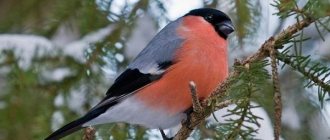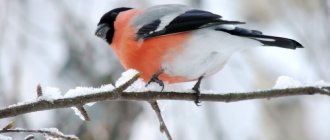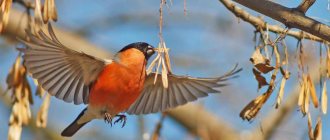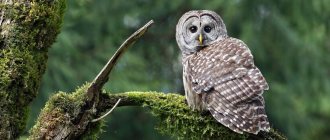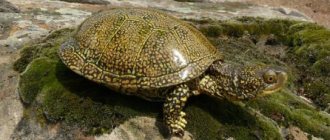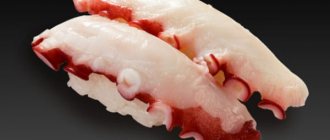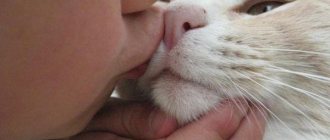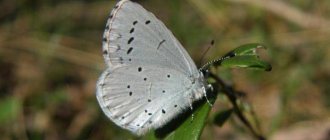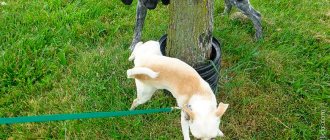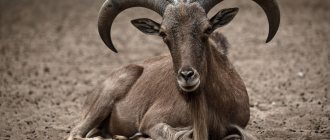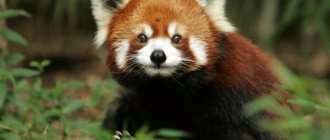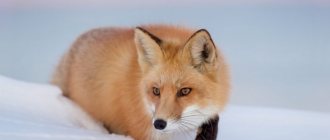Where are the rooks flying?
Some of them remain to spend the winter next to us. Previously, rooks regularly flew away from central Russia for the winter. This phenomenon usually occurred in October. Rooks gathered in huge flocks and moved along the Black Sea coast to the Caucasus, to Turkmenistan and somewhat to the south - to India, Afghanistan, and Africa.
Interesting materials:
How should the disc be positioned on an angle grinder? How should a hoodie fit? How should slim jeans fit on a man? How should the bride and groom sit at a wedding? How to update your Beeline tariff ahead of schedule? How to get a SIM card from Nokia 2? How do fur seals move? How to move the arrows on G Shock? How to study remotely effectively? How to export animation from Photoshop?
Why does the bullfinch have a red breast?
Readers of Dino-Afisha are already familiar with the children's fairy tales of Natalya Rysaeva. All of them unobtrusively teach kids kindness, empathy, and friendship. Using the example of heroes, you can discuss with your child the rules of behavior, good or bad deeds. The fairy tale “Why does the bullfinch have a red breast” will tell kids why we should be grateful to the brave bird, and why it is so important to hang feeders in winter.
One winter, Kolya and Lena went sledding into the forest. The guys rode, rode, sat down to rest, and suddenly they saw a bird on a spruce branch. A bird sits on a snowy branch, it is small and gray, and its chest is red, as if it were a scarlet tie.
— I wonder what kind of bird this is and what it’s called? - Lena asked Kolya.
“I don’t know,” Kolya answered his sister. — This is the first time I’ve seen such a bird. - If only I could meet Kharitoshu, our goblin friend, he knows for sure!
Then the snowdrift near which the guys were standing began to crackle, and Kharitosha, the little forest goblin, came out of it, shaking himself off.
- Who is calling me and remembering me? - asked Haritosha. - Oh, old friends, hello! - The goblin was happy when he saw the children.
Kolya and Lena rushed to hug Kharitoshu, and the goblin invited them to visit him. The guys happily agreed, and in the cozy little house of the devil, while drinking tea, they asked about the bird.
“How could you not know? Of course, I know this bird,” answered Kharitosha, “its name is bullfinch.” And now I’ll tell you why her breast is red. “It was a long time ago,” the goblin began the story, “my grandfather was still young.” An old swamp caught fire, and then the forest began to burn. The fire was severe. All the animals and birds got scared and started screaming and rushing about. Panic began in the forest. And only one little bird was not afraid, and flew through the fire to call my grandfather for help. The wings were scorched, but still managed to fly to him. My grandfather immediately hurried to the aid of the animals...
“Oh, how scary,” Lena even closed her eyes. - What happened next?
“It took a long time to put out the fire, many trees and flowers burned, but the forest, birds and animals were saved,” Kharitosh continued the story. “And so, as a reward for his courage, my grandfather awarded the bullfinch a red tie.” In the summer, bullfinches fly away from the forest, but as soon as snow falls, they fly into the forest. And their breasts turn bright red.
“What a brave bird,” the guys praised the bullfinch. - saved the whole forest!
“There are a lot of useful birds and animals in the forest,” answered Kharitosha, smiling. - not only the bullfinch. “You come to visit me next time, and I’ll tell you about what you can treat the bullfinch and other birds in winter, because now it’s winter, it’s a hungry time, and it’s difficult for birds to get food now.” - And now it’s time for you to go home, it’s already dark, so mom and dad will worry?
- Oh, and it’s true! — the guys realized it. — Goodbye, Kharitosha, thanks for the interesting story! — Lena and Kolya thanked the devil goodbye.
Near the house Kolya suddenly stopped and said:
- You know, Lena, let’s ask our dad tomorrow to make a feeder and hang it in our yard. - We also have a lot of different birds flying.
- Of course, go ahead! — Lena agreed. - Kharitosha said everything correctly, in winter we are hungry, and we need to help the birds...
Do you guys help birds in winter?
Bullfinch: nutrition, lifestyle, character
Bullfinches are birds that can be found quite often. They mainly live in Europe and Asia, preferring to live in coniferous or mixed forests. Birds are also often seen in the courtyards of residential buildings or parks. Most often, they move closer to people in winter, when it is difficult to get food.
Let's tell you more about the way of life of bullfinches:
- Nutrition.
Bullfinches mainly feed on plant foods. These birds rarely eat insects, only in cases of great hunger. The favorite food of bullfinches is seeds, which they extract from the cones of coniferous trees. Birds can also eat young shoots, leaf buds, and flowers.
Photo: pixabay.com: UGC
In winter, bullfinches love to feast on rowan berries. They throw away the pulp because they are only interested in the seeds. Therefore, bullfinch on mountain ash is a fairly common phenomenon.
If you want to feed bullfinches in winter, offer them raw sunflower seeds, millet, and oatmeal. Sometimes bullfinches can eat carrots, rose hips, and hemp.
- Habitat and character.
Bullfinches live in flocks (up to 10 individuals), quite friendly. These are peace-loving birds, so they rarely get into conflicts. They also do not quarrel with other birds or animals.
Photo: pixabay.com: UGC
Bullfinches are usually leisurely, but neat. They are wary of people, as they consider them a threat to life.
Comment
It is interesting that in the warm season no one notices these bright birds. The reason is that the red belly of bullfinches loses its brightness and richness of color, becoming pale pink. This allows the birds to successfully hide in the dense foliage of trees. In the summer, birds are preoccupied with breeding their offspring, so they don’t need to attract too much attention to themselves.
Bullfinches feed on seeds, plant buds and berries, from which they peck seeds. They also feed the chicks with plant food. Brightly colored birds almost never eat insects.
The ancestor of the hero of this article is the brown Nepalese finch, which lived in ancient times in South Asia. It gradually migrated to the northern regions, degenerating into a new species. Today science knows five varieties of bright birds. These are the common bullfinch, Ussuri bullfinch, gray bullfinch, Azorean bullfinch and Philippine bullfinch. Based on the names, it is easy to determine the places of origin of birds and their habitat.
The red breast is found only in two species: common and Ussuri bullfinches. The rich color is provided by carotenoids contained in plants eaten by birds. Males attract females with their bright colors. The homely appearance of females is more than compensated by their stern disposition. Snow Maidens always prevail over males when solving family issues, and when obtaining food for themselves, they choose the best branches of berries and scatterings of seeds.
Bullfinches are also popularly called mockingbirds for their rare gift of imitating the sounds of other birds. Female Snow Maidens love to tease crows by imitating their caws. In the old days, the red-breasted bird was called the Russian parrot for its ability to reproduce various sounds. In captivity, birds learned to whistle, repeat the sounds of a pipe, pipe, and imitate the singing of canaries. Singing bullfinches could be sold profitably. Today, almost no one uses this rare gift, and they are kept only as ornamental birds.
Where do bullfinches live in the wild?
The characteristic features of birds are their high prevalence in nature. These small birds settle almost everywhere, excluding only hot countries. They are found in different habitats: Europe, Asia, Japan, Russia.
Some varieties are found in Spain and Greece. Bullfinches adapt well to temperate climates, which require winter coolness. After all, it is in winter that bullfinches are most active.
Birds choose mountain forests to live. Bullfinches practically do not live in areas without forest. Once near the city, they settle in parks and squares that remind them of their natural habitats.
Bullfinches are considered sedentary birds. They choose a certain area of life and begin to build their nest in this place. Birds live in this territory almost their entire lives, but there are exceptions to this rule.
In the summer, even in standard places of residence, bullfinches are practically not found. In winter, they disperse in large flocks and become more noticeable due to a change in color to a brighter one.
Elena
Ask a Question
Question to the expert
How do bullfinches move?
The bullfinch, which belongs to the finch family, moves like other representatives of this species: with the help of leaps. It makes short, leisurely jumps, the length of which reaches about 5 cm. If they have to cross over loose snow, bullfinches help themselves with their wings.
Some species of bullfinches can sometimes change their place of residence. This applies to adult birds that live in the northern regions. When temperatures get too low there, they fly south, where winter approaches with their arrival.
Abstract of OOD "Red-breasted Bullfinches"
Svetlana Makarova
Abstract of OOD "Red-breasted Bullfinches"
Goal: to teach children to convey their observations of living nature in artistic and visual activities through modeling from salt dough.
• teach how to depict bullfinches , convey the features of the external appearance (structure of the body, shape of the head, wings, tail, characteristic coloring );
• consolidate the techniques of rolling, flattening, smearing, dividing into parts using stacks;
• develop compositional skills.
Developmental: formation of creative activity, artistic taste; development of fine motor skills; formation of a sense of color.
Educational: instilling endurance, willpower, and the ability to quickly switch attention.
Methodological techniques used during the lesson:
• viewing the presentation “ Bullfinches ”
;
• review of the finished work;
• demonstration of teaching techniques.
For the teacher: presentation, finished work, multi-colored dough for all participants in the lesson, napkins, stacks, modeling board.
For children: dough for each child, modeling boards, stacks, napkins.
• observing the behavior of birds while walking;
• examination of illustrations depicting wintering birds;
• hanging feeders in the walking area;
Sign
One of the answers to the question “why are bullfinches called bullfinches” can be a sign indicating that the appearance of the bird foreshadows imminent snow. Bullfinches become noticeable with the onset of cold weather. The bright plumage is especially striking when the leaves fall on the trees. The name of the bird comes from the word “snow”. Arriving in warm regions in winter, birds with their red-pink bellies draw people's attention to the expected onset of cold weather.
This is partly true, although to better understand why bullfinches are called bullfinches, one should turn to history. The birds got their name from the Turkic word “snig” - red-breasted. Later the name was transformed into a modern sound. That's why the bullfinch was called that.
What does a bullfinch bird look like?
Considering what a bullfinch looks like, it should be noted that it is a very attractive bird. Nature itself decorated his body with bright colors, while everything in his appearance is harmonious, there are no unnecessary dissonant elements. The main body color option is all shades of black.
The bullfinch bird, thanks to its rich red breast, looks very attractive and elegant
Characteristic appearance features
You can recognize the common bullfinch by the following description of its appearance:
- Average weight is 30-36 grams, body length is 19 cm, wingspan is about 29 cm.
- Refers to singers.
- On the head there is a black “cap” or “mask” of tail feathers that have a beautiful bluish tint.
- The white plumage on the lower back and undertail creates harmony with the rich red tones of the sides, neck, cheeks and belly of the bird. Scarlet can be represented in various shades, depending on the specific species and gender.
- The chicks are always brown, and gradually with age they acquire the color characteristic of a male or female.
- Paws with three toes ending in very sharp claws.
Note! These birds are not at all afraid of humans; in addition, they prefer to settle closer to them in order to be able to feed them.
Differences between male and female
The bullfinch is a bird that has certain differences between representatives of different sexes, knowing which even a beginner can distinguish a female from a male.
Body size and weight are very similar, but the main difference is coloration. The chest and sides of males are painted in an elegant scarlet color, while in females these areas look much more modest, in pink and gray tones. Thus, the main thing you need to look at to understand what sex a bird is is the breast plumage. Other color features of females and males are similar.
Social structure and reproduction
Photo: Red Bullfinch
The mating season of bullfinches goes as follows:
- the season begins with a change in the behavior of males. Birds become more courteous, their voice sounds more pleasant and melodic. Males begin to dedicate their songs to females, and they begin to choose a suitable partner. Pairs are formed only in March;
- The next stage can be called nest construction. The male and the female begin selecting a suitable place and collecting materials. Most often, these animals build houses on spruce forests. They are placed high enough and away from the trunk. So they try to protect their future offspring from predators as much as possible. To build a nest, birds use dry grass, twigs, lichen, animal hair, and dry leaves;
- in May, the couple produces eggs, which will then hatch into little bullfinches. There are not many eggs in one clutch - about six. They are quite bright, blue in color with brown specks. The incubation process takes about two weeks;
- Bullfinches chicks are born very tiny, helpless. Their only strong quality is the feeling of hunger. Parents have to work all day to feed their offspring enough.
Interesting fact: Despite their helplessness, bullfinches chicks have fairly good health and wide natural potential. They are developing at tremendous speed. Within a few weeks after birth, the chicks learn to fly, and after another two weeks they can lead a completely independent lifestyle.
Progress of the lesson
1. Organizational moment.
Teacher: Hello children! I have a secret for you. Want to know which one?
Teacher: Then I’ll ask you to come to me and stand in a circle.
All the children gathered in a circle,
I am your friend and you are my friend.
Let's hold hands tightly
And let's smile at each other!
Teacher: Guys, I left the house early today. It was a wonderful winter morning. the snow crunched underfoot . And suddenly I saw an extraordinary picture. Guess who I saw?
Despite the frost,
In red birch apples .
He came closer. Ay!
(
Bullfinches ) (Slide 1)
Teacher. Children, what surprised me? (Apples do not grow on a birch tree, they grow on an apple tree and ripen not in winter, but in summer and autumn).
Teacher: Yes, I also immediately thought about it. But why did I mistake bullfinches for apples ? (Because bullfinches have red breasts )
.
(Slide 2,3)
.
It’s very cold outside, and the birds clung to the birch branches, pulled their heads into the feathers, pressed their paws to keep warm, as soon as their scarlet paws were visible from afar. Bullfinches are wintering birds. They spend spring and summer in the northern forests, and in the fall they gather in flocks and fly to our parks, pecking at rowan berries, rose hips, and various seeds. (Slide 4,5,6)
.
There are bullfinches in the trees .
But quite strange.
The teacher invites the children for a walk in the winter park. Physical education minute.
The entire forest is covered with snow (turn to the right, move your right hand back, turn to the left, pull your left hand back)
Here a bunny is jumping in the snow (we jump)
A flock of titmice sat down there (we wave our arms like wings)
There is a fox behind a bush (we crouch, look to the right)
There is a little squirrel’s house in the hollow (we get up, raise our hands up)
2. Practical part.
Teacher. Today we will depict bullfinches using salt dough.
Let's discuss the structural features of the bullfinch's . It has an oval red , a black, small, slightly flattened head with a sharp triangular beak, a pointed multi-colored wing, and a rectangular black tail with a small notch.
Stages of work execution.
Let's start sculpting in order:
•torso: roll out a ball of red , using straight hand movements to transform it into an oval;
•wings: roll a long sausage from black dough, sharpen the ends of the sausage. Bend it in an arc, the ends touching the work table, take the arc in the middle and attach the middle part to the upper side of the body, where the bird’s head should be. Place the edges of the arc on the sides of the body, flatten it on the base; roll short and thin sausages of white and blue colors, divide them in half, place strips on the middle part of the wings;
Warm-up for fingers “ Bullfinches ”
There's a new thing around the corner for the birds ( "walking"
fingers on the table)
There is a canteen "Ryabinka"
.
Look, kids, (we clench and unclench our fists)
The red dawn has risen .
Bullfinches , wake up quickly (we open our beaks)
And treat yourself to some mountain ash. ( "peck"
fingers in a pinch)
•eyes: roll peas – eyes white (yellow)
colors, yellow short carrot beak;
•tail: attach a short black sausage to the lower part of the body, make a cut at the end of the sausage, and move the edges to the sides.
3. Final part.
Teacher: guys, look what beautiful bullfinches we got ! Do you like them? We will organize an exhibition of your works.
bullfinches today ?
What did we make the bullfinch ?
Name the main parts of a bird.
Reflection. Guys, I have a drawing of an apple on my table. If you liked sculpting, take a red apple , if not, then take a green one.
1. Davydova G. N. Plasticineography. Animal painting. – M.: Publishing house “Scriptorium 2003”
, 2008.- 88 p.
Artistic and aesthetic development of children with disabilities. Summary of a lesson on plasticineography on the topic “Bullfinches” Artistic and aesthetic development of children with disabilities PLASTILINEOGRAPHY Group of disabilities Teacher: Ospennikova Tatyana Evgenievna Goal: Self-realization.
Summary of direct educational activities on application in the senior group “Bullfinches” Synopsis of direct educational activities on application in the senior group “Bullfinches” Purpose. Teach children to transfer in applications.
Abstract of the GCD “Collective application “Bullfinches” Synopsis of the GCD “Collective application “Bullfinches”. Goal: to teach children to convey the image of birds in applications, the features of the shape of body parts, observing.
Abstract of the GCD for the application in the senior speech therapy group “Bullfinches on the branches” Objectives: To consolidate the idea of wintering birds, their appearance; Develop a caring attitude towards birds; Teach teamwork. Summary of a lesson on the surrounding world “Bullfinches on rowan branches” Lesson on ecology On the topic: “Bullfinches on rowan branches” Prepared by the teacher of MBDOU MO No. 190, Krasnodar Aminat Ilyasovna Filimonova.
Abstract on art activities using the plasticineography technique “Bullfinches” Program content: Cognitive development: Expand children’s understanding of wintering birds. Teach children to convey their observations.
Summary of a lesson on appliqué in the second junior group “Bullfinches on branches” Program content: To develop interest in applique, curiosity, to cultivate a caring attitude toward birds, and a love of wildlife. Summary of a lesson on unconventional drawing in the middle group "Bullfinches" Summary of a lesson on unconventional drawing in the middle group "Bullfinches" Purpose: To introduce children to an unconventional drawing technique - printing.
Summary of a drawing lesson in the second junior group “Bullfinches on the branches” Summary of a lesson in the junior group Topic: “BUFFINLES ON THE BRANCHES” Objectives: 1. Educational: to give an idea of the bullfinch bird; learn to name parts.
OOD plan for drawing in the senior group “Bullfinches on a branch” Topic: “Bullfinches on a branch” Purpose: to give an idea of the bullfinch bird; Objectives: to develop the ability to name parts of the bullfinch’s body; develop creativity.
Source
What do bullfinches eat?
The massive beak of the bullfinch only seems powerful and can easily crack even a nut. This beak is often stained with the juice and pulp of rowan berries, from which bullfinches eat the seeds with appetite.
Bullfinches also feast on other plant foods - linden, bird cherry and larch buds, ash and maple lionfish, lilac and weed seeds.
Adult bullfinches are almost exclusively herbivorous, but parents add small insects and spiders to the chicks' diet.
What does a bullfinch eat?
Photo: Bullfinch in winter
Bullfinches cannot be called omnivores. They eat a limited range of foods. The most favorite delicacy of these tiny birds is rowan. Many people know about this fact, because bullfinches are often depicted in pictures together with bright red mountain ash. Birds feed in flocks on rowan trees. They choose the tree with the most berries, and they all sit together on one branch. During feeding, males show their gentlemanly qualities. They always let their ladies go first. Thus, females have the opportunity to choose large, ripe, tastiest berries.
However, these animals do not eat the pulp of the rowan berries. Of these, they prefer to take only seeds. These birds also love to eat the seeds of other trees. They choose maple, ash, alder, elderberry, and hornbeam. They fly out in flocks in search of suitable food. It is impossible not to notice the bullfinches; they literally cover the entire tree.
In summer, the diet of snowbirds is wider. In addition to seeds of various trees, it begins to include plant seeds. These birds eat burdock, horse sorrel, and quinoa. Many other field grasses are also commonly eaten. Quite rarely, the diet of bullfinches begins to include protein food in the form of various small insects.
Interesting fact: It is no secret that snowbirds are very nimble, fast and dexterous birds. However, during feeding they are very clumsy. This leads to the fact that the birds do not notice the danger and become victims of attacks by domestic and predatory animals.
